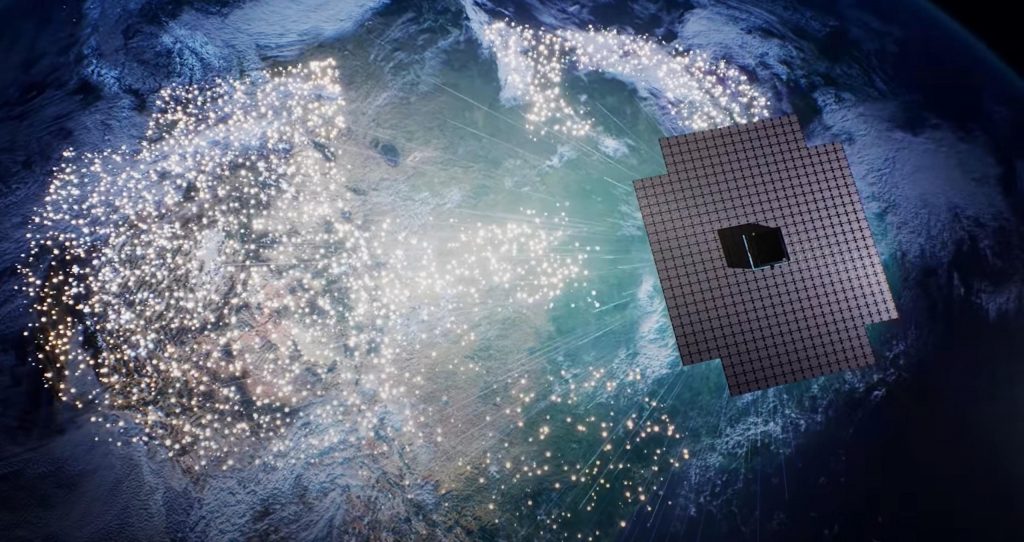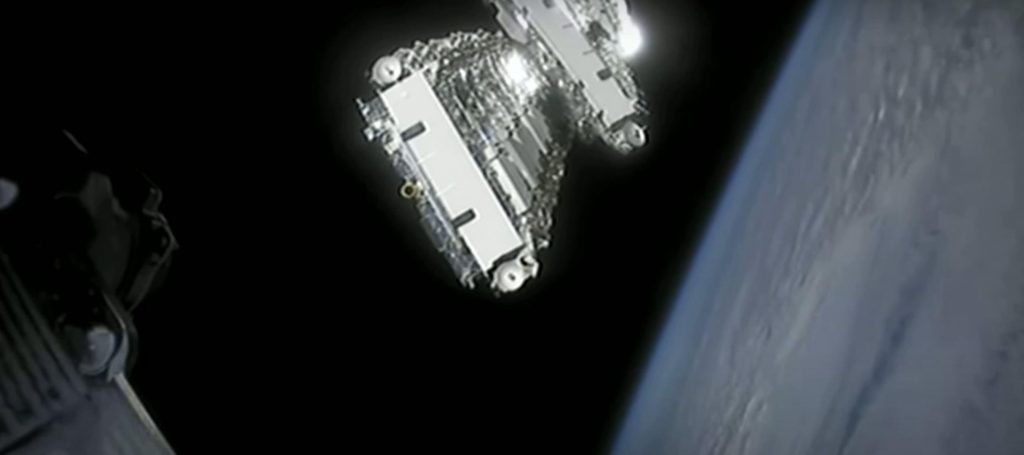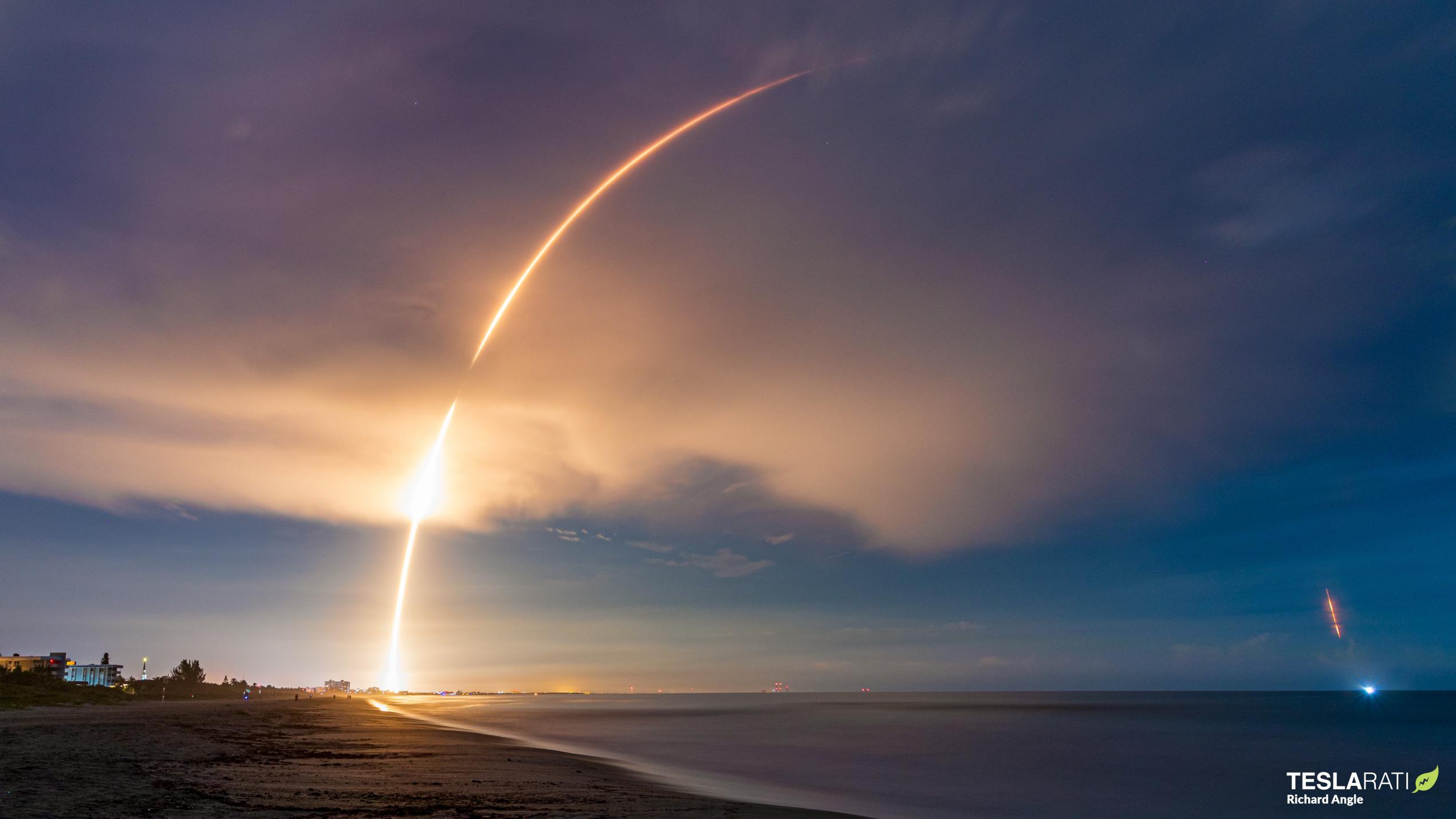SpaceX has completed its 52nd successful Falcon 9 launch in 52 weeks, sustaining an average cadence of one launch per week for a full 12 months.
Simultaneously, the Starlink 4-2 rideshare mission set a new record for Falcon 9 booster reuse, marked SpaceX’s 150th consecutively successful launch, and was one of the most complex commercial launches it has ever performed.
In addition to 34 new Starlink V1.5 satellites that joined almost 3000 other working SpaceX spacecraft in orbit, Starlink 4-2 deployed the company’s largest rideshare payload yet – AST SpaceMobile’s 1.5-ton (~3300 lb) BlueWalker 3 communications satellite.
Falcon 9 lifted off on schedule with the combined 12-ton (~26,500 lb) payload safely secured inside its composite payload fairing at 9:20 pm EDT (01:20 UTC) on Saturday, September 10th. Tasked with lifting the rocket’s expendable upper stage, recoverable fairing, and payload most of the way out of Earth’s atmosphere was Falcon 9 booster B1058, a nine-engine first stage that debuted by launching two NASA astronauts in May 2020.
28 months later, B1058 lifted off with Starlink 4-2 and BlueWalker 3 on its 14th spaceflight and orbital-class launch, breaking Falcon 9’s booster reuse record. The rocket performed no differently than it had every time previously, burning for a bit less than three minutes before deploying the upper stage and returning to Earth. About nine minutes after liftoff, B1058 safely touched down on drone ship A Shortfall Of Gravitas (ASOG), likely setting the booster up to break its own record before the end of 2022. With 13 launches already under their belts, boosters B1051 and B1060 will likely follow B1058 past the same 14-flight milestone in the near future.
Once free from the booster, Falcon 9’s expendable upper stage kicked off SpaceX’s most complex commercial launch ever. Measuring about six minutes long, the first and longest burn brought the second stage and payload into an elliptical orbit a few hundred kilometers above Earth’s surface. A second burn followed about 45 minutes after liftoff, raising the low end of that ellipse to deploy BlueWalker 3 into a circular orbit around 500 kilometers (~310 mi). Using a massive antenna, AST SpaceMobile’s first large satellite prototype will eventually attempt to directly communicate with mobile phones to provide a level of connectivity equivalent to 5G/LTE – all from space.
Once free of its rideshare payload, the focus shifted to Starlink. In theory, SpaceX could have taken the easy way out and significantly simplified the mission by deploying all 34 satellites at the same altitude as BlueWalker 3, simultaneously allowing them to reach their operational 540-kilometer (~336 mi) orbits in days instead of months. Instead, SpaceX pursued an exceptionally complex mission requiring five burns from Falcon 9’s upper stage.
After deploying BlueWalker 3, Falcon 9 S2 lowered one end of its orbit at around T+67 minutes, followed by a fourth burn to lower the other end almost two hours after liftoff. The upper stage then spun up end over end and eventually released all 34 Starlink satellites at an altitude of ~335 kilometers (~208 mi), where debris and faulty satellites will take days – rather than years – to reenter Earth’s atmosphere and burn up.


While SpaceX doesn’t confirm post-payload operations, Falcon 9 S2 was also scheduled to perform a fifth and final burn to quickly deorbit itself, ensuring that the mission only produced five pieces of benign debris. At their very low orbits, those five pieces (four ‘tensioning rods’ and the BlueWalker 3 payload adapter) will pose next to no threat to other spacecraft or rockets and should reenter within a few weeks.
Starlink 4-2 was SpaceX’s 52nd successful Falcon 9 launch since September 14th, 2021, meaning that the company has technically already achieved CEO Elon Musk’s goal of 52 launches in one year – albeit not a calendar year. Perhaps even more impressive, the mission was SpaceX’s 150th consecutively successful Falcon launch. No other single rocket (Falcon 9) or rocket family (Falcon) has launched more times in a row without failure.
Finally, Starlink 4-2 was SpaceX’s 42nd launch of 2022. If the company continues its average cadence over the last three months, it could end 2022 having completed more than 60 Falcon launches in one calendar year.











